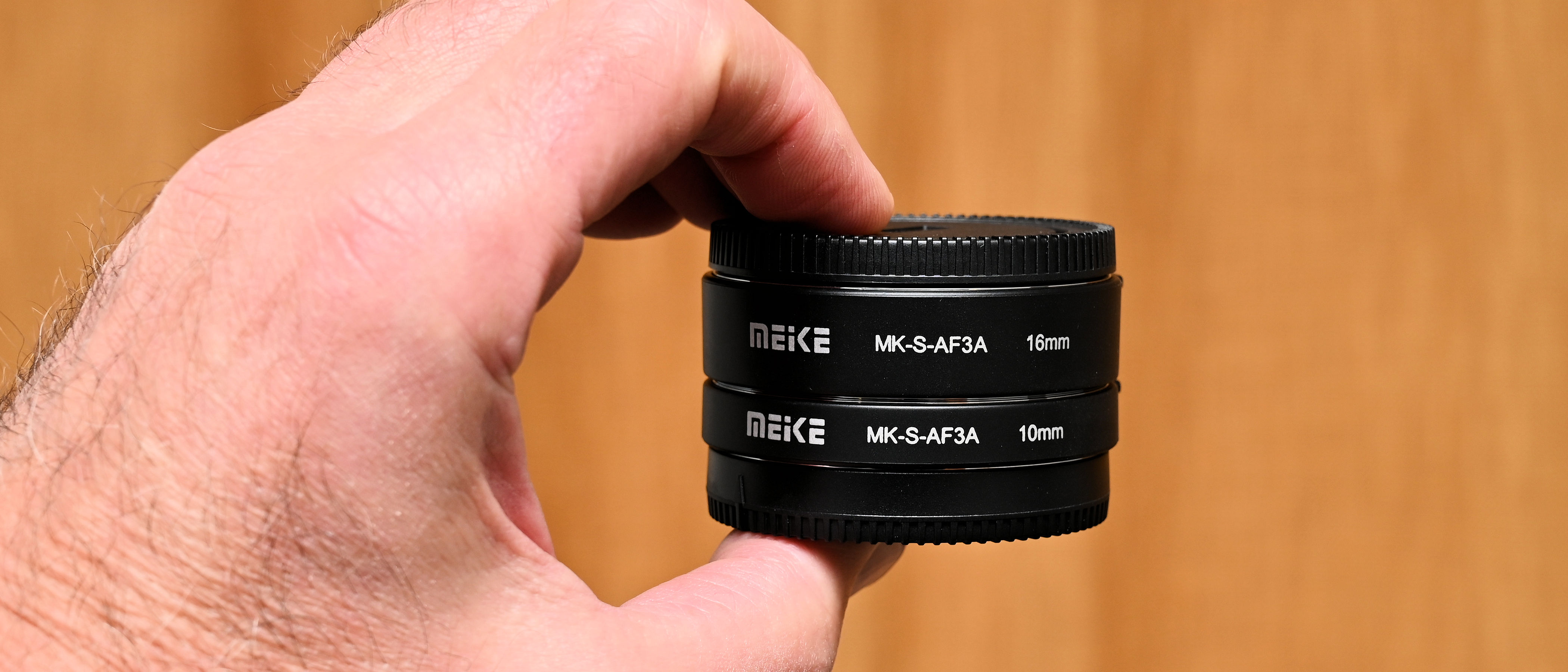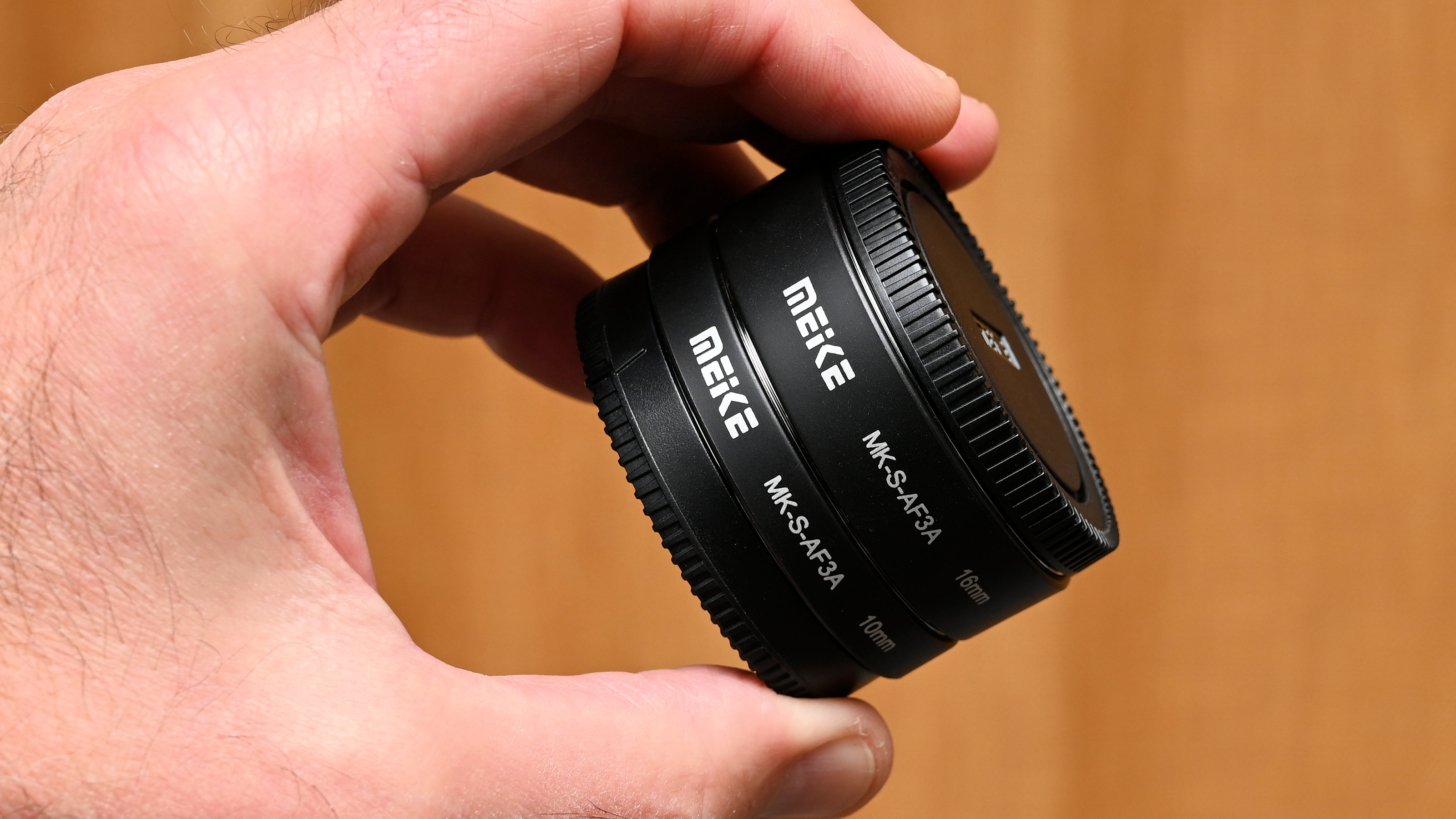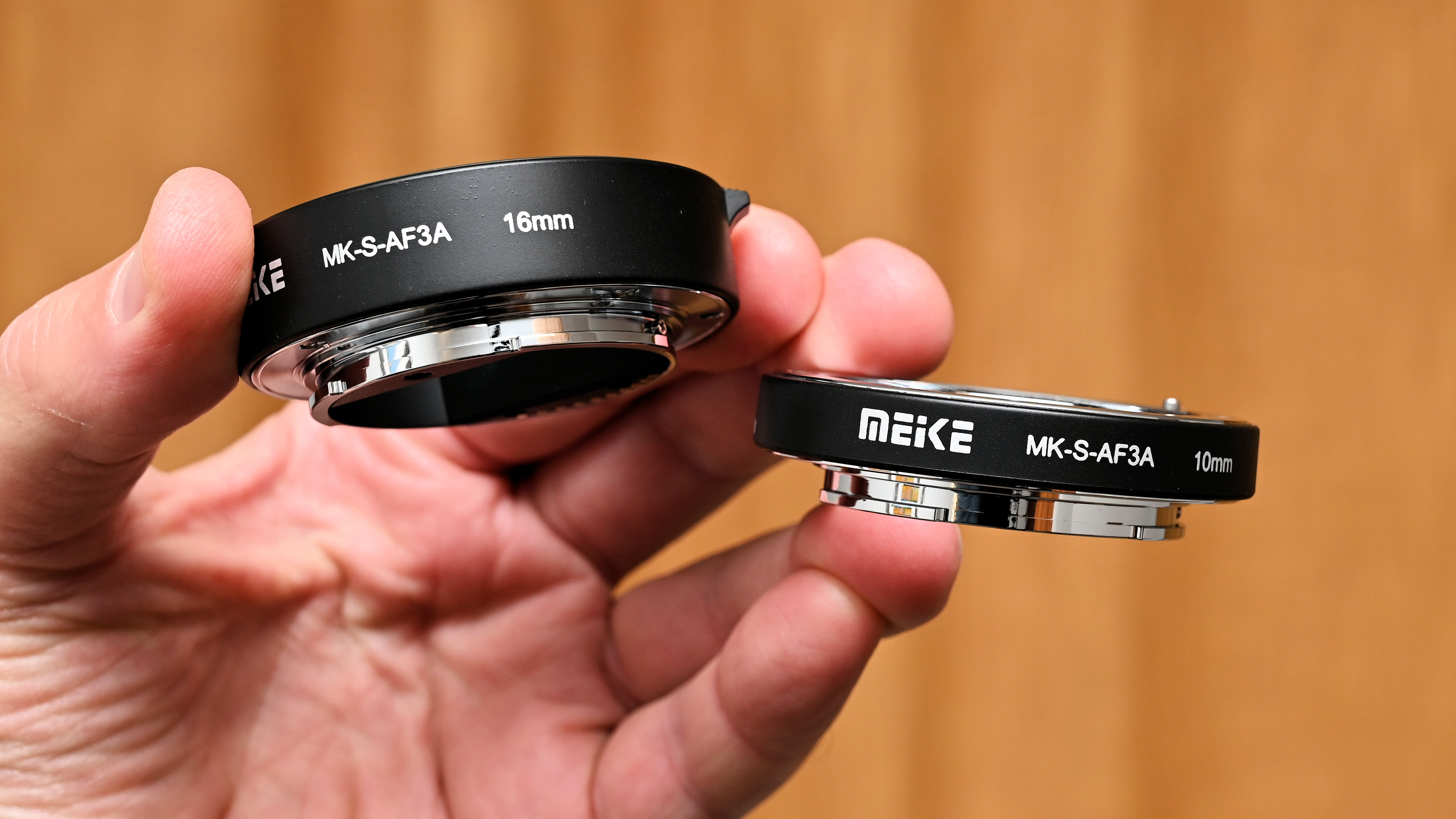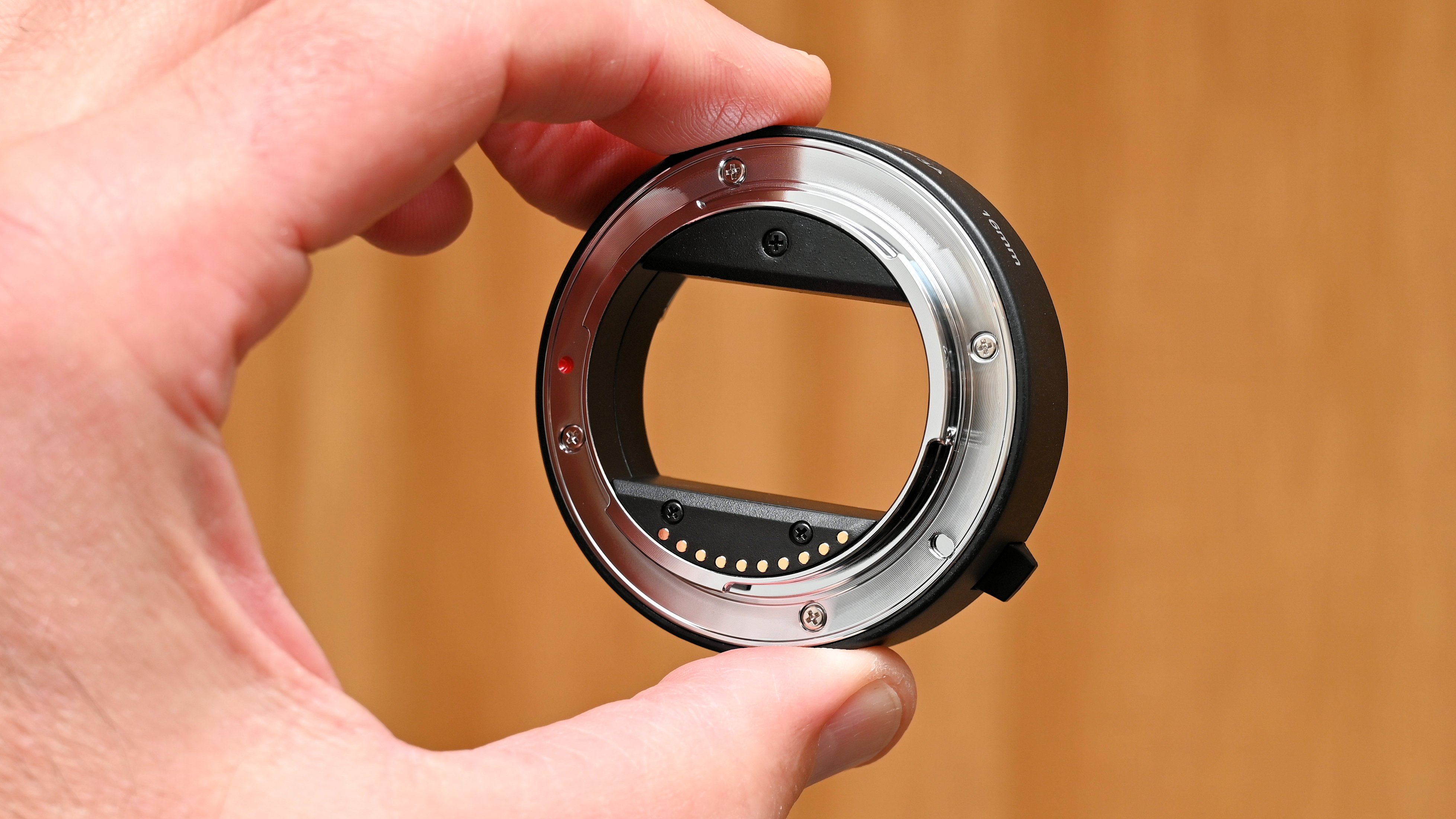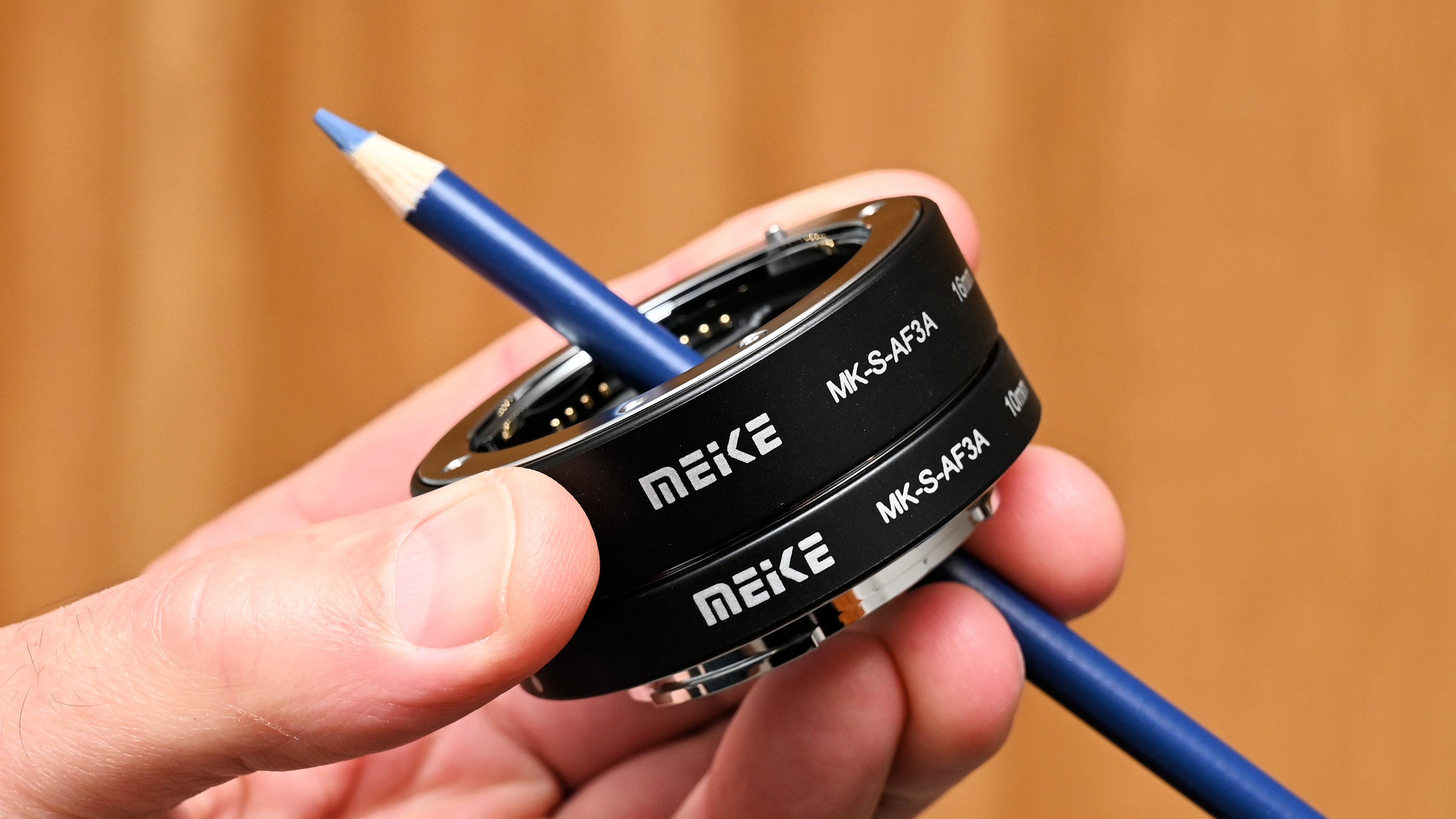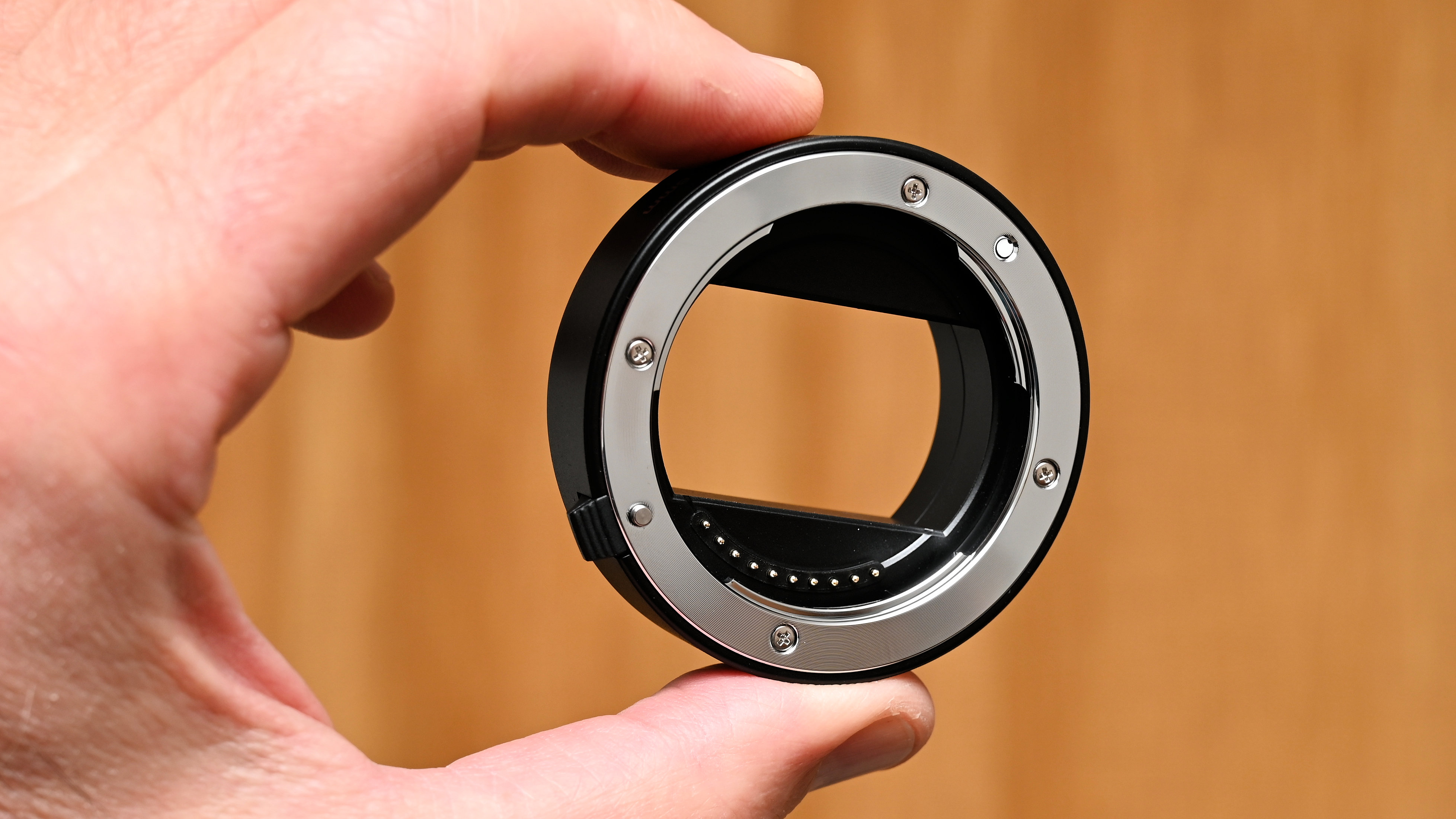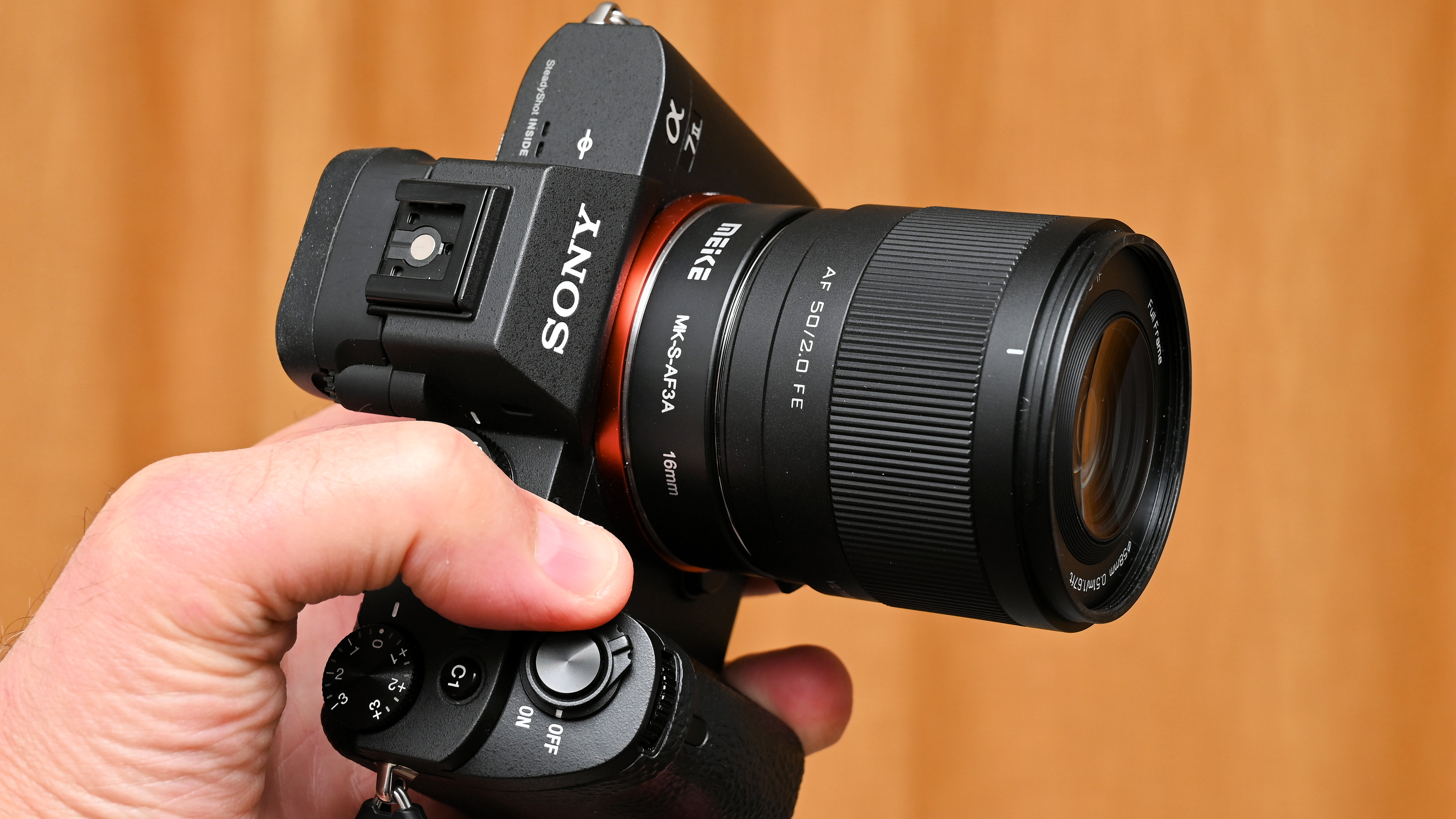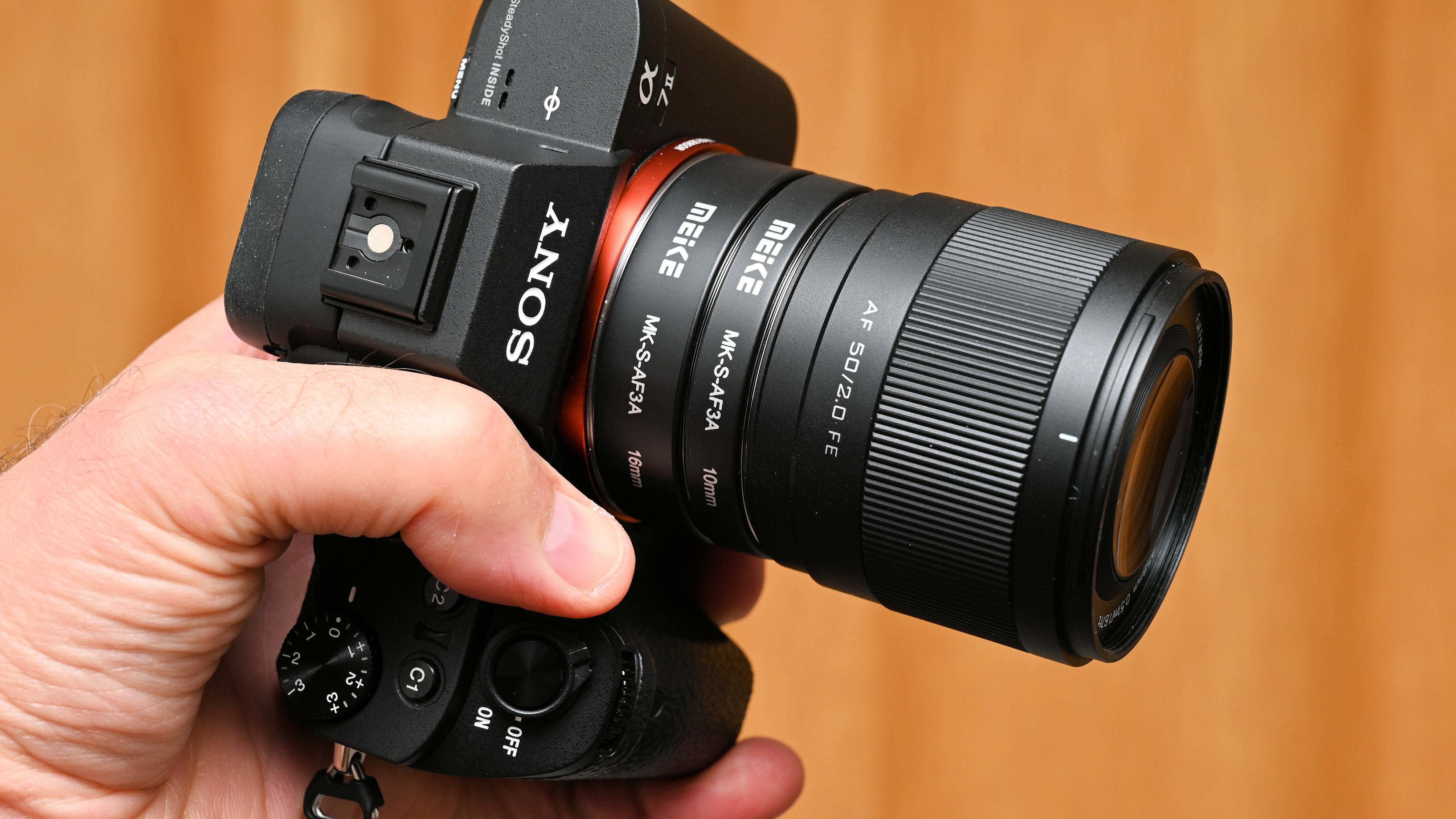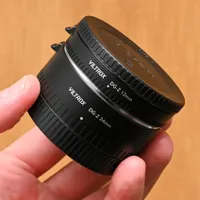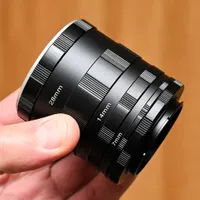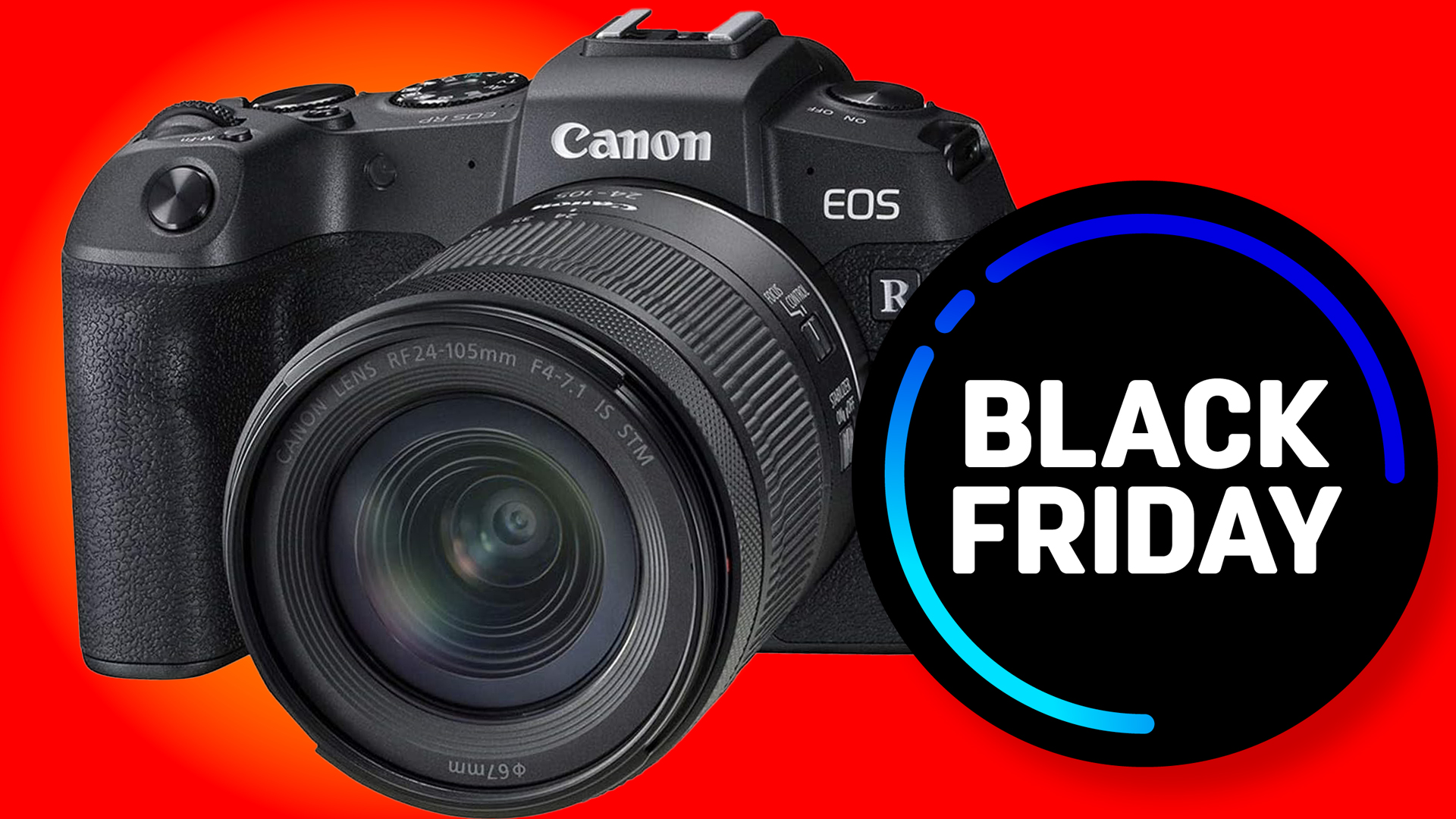Digital Camera World Verdict
I’m impressed with the build quality of the Meike MK Extension Tube Set, which I snapped up in its Sony E-mount version. Both of the individual tubes supplied in the set have metal mounting plates for both camera and lens, plus a full array of gold-plated connectors for electronic communication throughout. They’re relatively easy to use and, all things considered, great value at the price.
Pros
- +
Tailor-made for mirrorless
- +
Full electronic communication
- +
Impressive build quality
- +
Inexpensive to buy
Cons
- -
Only 2 tubes in the set
- -
Modest magnification
- -
Inferior to a macro lens
Why you can trust Digital Camera World
Meike is a Hong Kong-based company with global reach, specializing in the design and manufacture of cine lenses, camera lenses, lens adapters and accessories including flashguns, macro ring flash, camera grips and, lest we forget, macro extension tubes. Keeping pace with the shift to mirrorless cameras, Meike offers fully automatic, electronically coupled extension tube sets in Canon RF, Nikon Z, Sony E and Leica L-mount options.
Not just the same two-tube sets with different mounting plates and electronic connectors, the tubes have varying lengths for different mount option. The RF and L-mount versions have physical lengths of 13mm and 18mm, the Nikon Z version comprises 11mm and 18mm tube lengths, and the Sony E-mount set that I’m reviewing here has 10mm and 16mm lengths. All are full-frame compatible but you can also use them on APS-C format cameras of the respective brands, where you get a 1.5x increase in ‘effective’ magnification factor, thanks to the crop factor. All in all, the kits aim to be among the best extension tube sets available for mirrorless cameras.
Meike MK Extension Tube Set: Specifications
Lens mount | Canon RF |
Tube lengths | RF&L 13/18mm |
Electronic contacts | Yes |
Mount material | Metal |
Meike MK Extension Tube Set: Price
One of the most established and best-known automatic extension tube sets that I know of is the Kenko Auto Extension Tube Set DG for Canon EF and Nikon F mount DSLRs. Sure, the Kenko kit comprises three extension tubes whereas the Meike only has two but even so, the Kenko is much more expensive to buy at around $119 / £119 / AU$290. That makes the Meike look potentially great value at only about a quarter of the price, selling for around $33 / £33 / AU$60.
Meike MK Extension Tube Set: Design & Handling
I recently tested and reviewed the Fotodiox Macro Extension Tube Set. That one has three tubes and only costs around half the price of the Meike, but the Fotodiox kit has no electronic linkage between camera and lens, and only features one pair of camera and lens mounting plates, which you have to unscrew and screw on to whichever individual tube or group of tubes that you’re using. Compared with the Meike kit, it’s fiddly to set up and a chore to use.
By comparison, the Meike kit is a joy to use. Both of the tubes have permanently fixed camera mounting plates at the back and lens mounting plates at the front. The upshot is that if you want to use either one on its own, or both together for maximum enlargement, it’s a breeze to use. The next major bonus is that both Meike tubes have a full set of electronic contacts at both ends, coupled by the necessary wiring to ensure full communication between the host camera body and the lens, no matter whether you’re using just one tube, of both tubes together.
Even if you’re accustomed to shooting close-ups in manual mode, the addition of electronic connectivity might be more of a necessity than you think. Many lenses for mirrorless cameras, and older DSLRs as well, come to that, rely on electrical power and connectivity from the host camera body. Without this, you can’t use the manual focus ring, as it’s electronically coupled, typically to stepping motor that drives both autofocus and manual focusing. You also can’t adjust the aperture setting, as the diaphragm is adjusted electronically from the camera body and there’s no physical aperture control ring on the lens. Suffice it to say that your choice of lenses to use with extension tubes is very limited if there’s no electronic linkage.
Apart from the metal mounting plates at either end of each ring, a lock/release pin and a set of electronic contacts, there’s not much else in these or any other extension tubes. One thing that’s notable by its absence is that there are no optical elements – just an empty space between the mounting plates wrapped up in a black tube. That said, the Meike tubes do have a letterbox shaped cutout rather than a circular hollow interior, but even so you can do the usual trick of poking a pencil in one side and straight out of the other.
The best camera deals, reviews, product advice, and unmissable photography news, direct to your inbox!
The whole purpose of the extension tubes is to add distance between the back of the lens and the camera to which it’s attached. This shortens the minimum focus distance and gives you a larger maximum magnification factor as a result. You can use extension tubes with both prime and zoom lenses but a prime lens with a focal length of around 50mm to 100mm yields the best results and is the most convenient to use. Couple extension tubes to wide-angle lenses and you can suffer extreme vignetting, whereas long telephoto lenses give relatively little magnification.
The extension tubes in the Sony E-mount version of the kit I’m reviewing here have individual lengths of 10mm and 18mm. Those are fairly modest measurements in the scheme of things but, in practice, do enable sizeable magnification. And as with other extension tubes sold as a multi-part set, you can join both tubes together and insert them between the camera and lens, in this case giving a respectable overall length of 28mm.
Meike MK Extension Tube Set: Performance
Try using a physically long standard zoom lens with an extension tube, and you can run out of room between the front of the lens and what you’re shooting. Not only can the working distance get uncomfortably close but, in some cases, you won’t even be able to focus far enough away to avoid the lens coming into contact with the subject. Bear in mind that, while extension tubes reduce the minimum focus distance of a lens, they also reduce the maximum focus distance. So instead of being able to focus to infinity, you might only be able to stretch to a few inches, and that measurement is taken from the image sensor in the camera body, so it needs to accommodate the physical length of the lens as well.
The modest lengths of the Meike tubes and the fact that there are only two of them rather than three, gives a bit more breathing space between lens and subject. For my testing, I used a Sony A7 II camera body and a Viltrox AF 50mm f/2 Air prime lens. The latter, as its name suggests, is a very compact and lightweight lens, making it somewhat ideal for shooting with the addition of extension tubes.
The Viltrox has a fairly typical minimum focus distance for a full-frame 50mm prime lens, equating to about 0.5m. This gives a native maximum magnification ratio of 0.11x, again very typical, so small objects are reproduced on the camera’s image sensor at about 1/10th life size. Adding the smaller 10mm Meike extension tube into the mix boosts the reproduction ratio to 0.31x, which is a healthy step up. Correspondingly, the 16mm tube delivers a 0.43x ratio and if you use both tubes in tandem, you’ll get a 0.63x maximum magnification ratio. There’s a catch though, in that the light transmitted to the camera sensor is reduced at each step, shrinking to a factor of 2.66 when using the longest combined length and shortest focus distance. On the plus side, the electronic linkage enables the camera to take account of this and serve up the correct exposure settings regardless.




Scroll through the gallery of images just above and you’ll see a series of shots taken of a set of colored pencils on a sheet of white paper. For the first shot in the sequence, I used my 50mm lens at its minimum focus distance for maximum magnification, without using an extension tube. Successive shots in the gallery are based on the addition of the 10mm, then the 16mm (both on their own) and finally using both tubes to give a 26mm extension. Take a look at each image in turn and you’ll see how much greater the magnification becomes in each case.
Extension tubes are often said to cause no degradation in image quality. That’s basically because there are no additional glass elements in the optical path. However, lenses designed for general shooting don’t tend to major on delivering optimum image quality at their very shortest focus setting. Ultimately, you can expect very good close-up quality when using a good general-purpose prime or zoom lens with extension tubes, but it’s unlikely to rival the superior results of using one of the best macro lenses.
Meike MK Extension Tube Set: Sample images
The following gallery of example images was shot with my Viltrox 50mm prime lens on my Sony A7 II camera body. I used both of the Meike extension tubes in tandem to give the greatest possible magnification, which is also the sternest test of the tubes. The subject matter includes a variety of very small objects, and even smaller sections thereof, including seeds gathered from my garden, a 1/32nd scale model racing car, a pair of toy soldiers, the head of a traditional Christmas ‘Nutcracker’ toy, a porcelain figurine and a broken shell that I picked up on a beach. All of the subjects were lit with a pair of LED photographic lights.

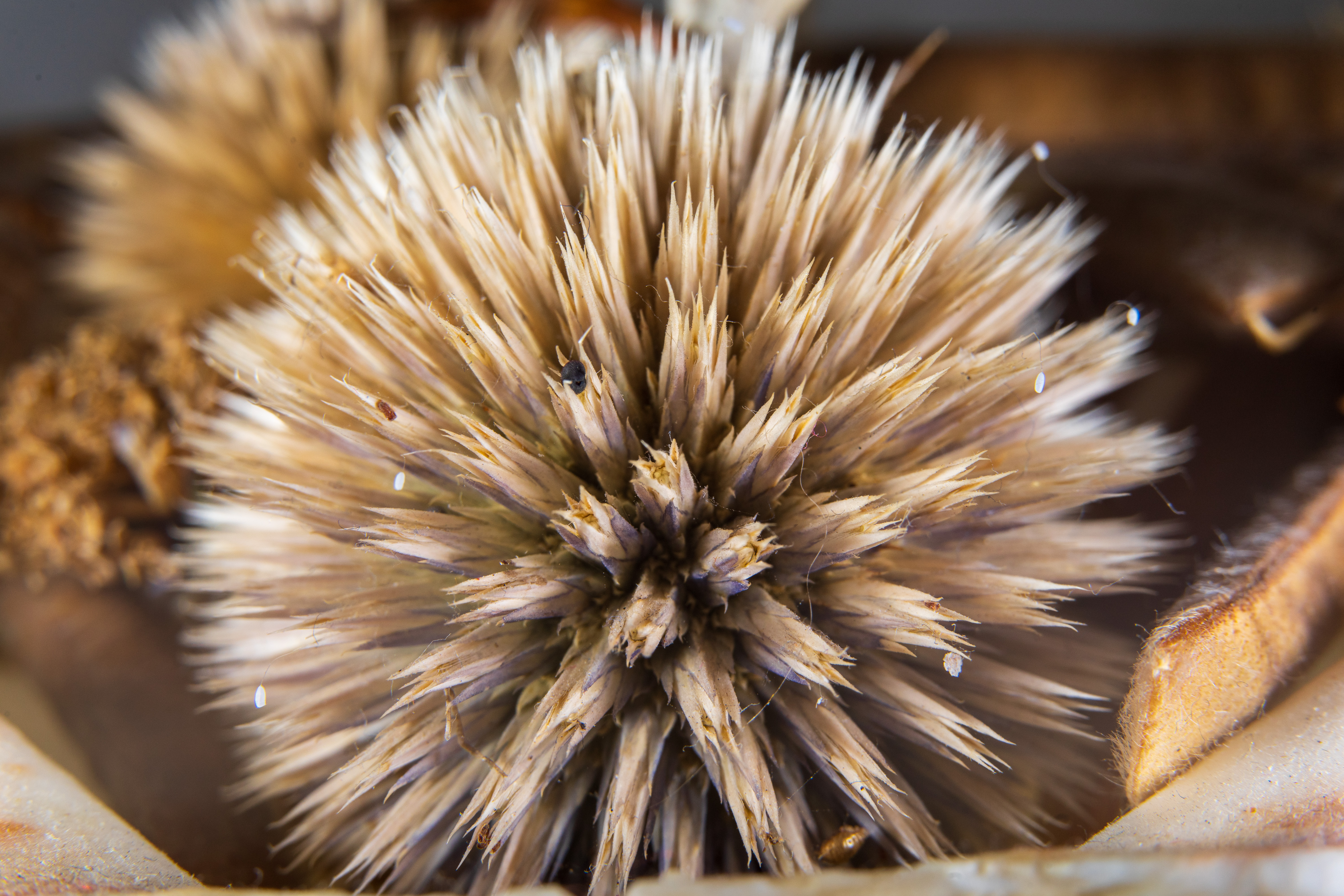
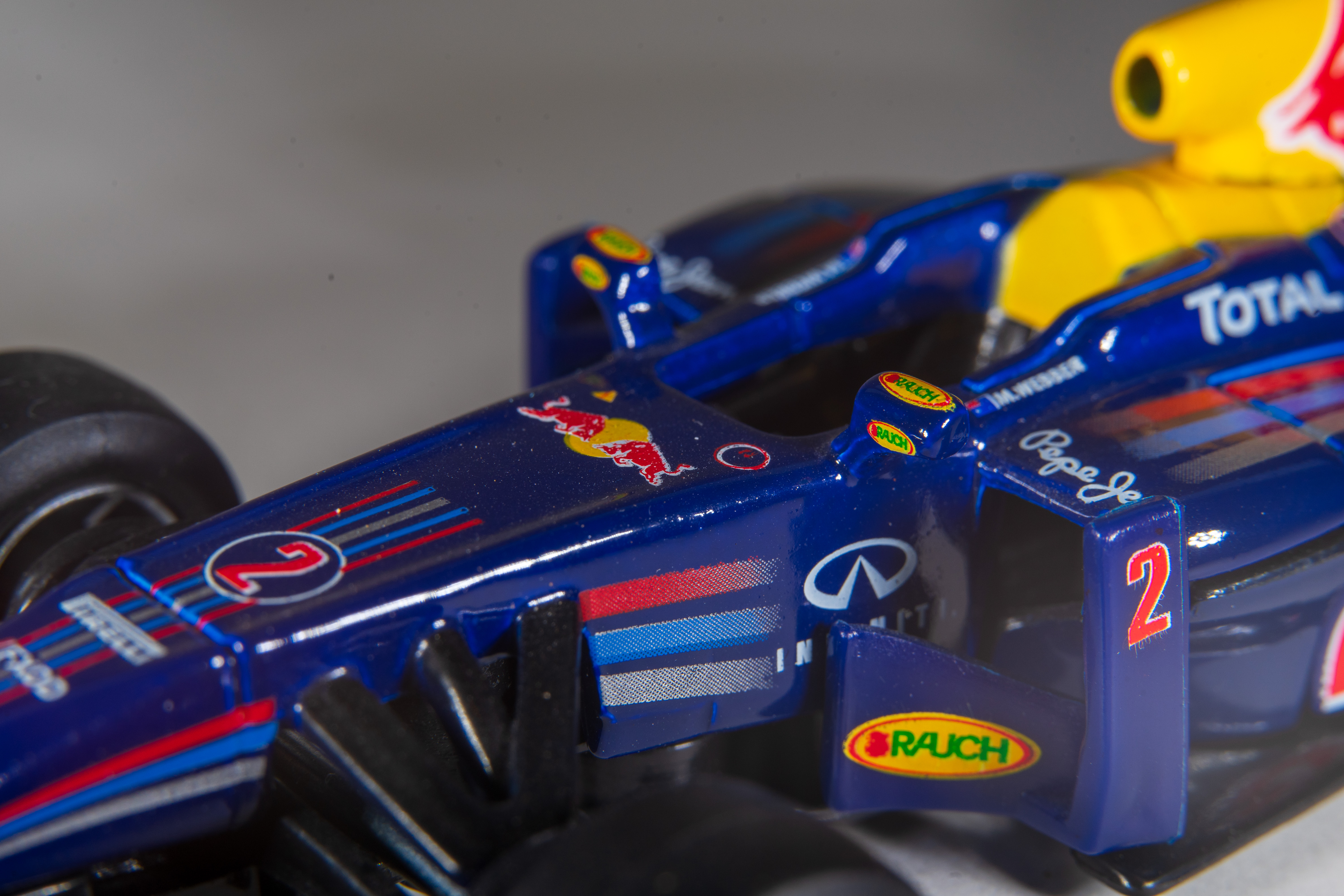


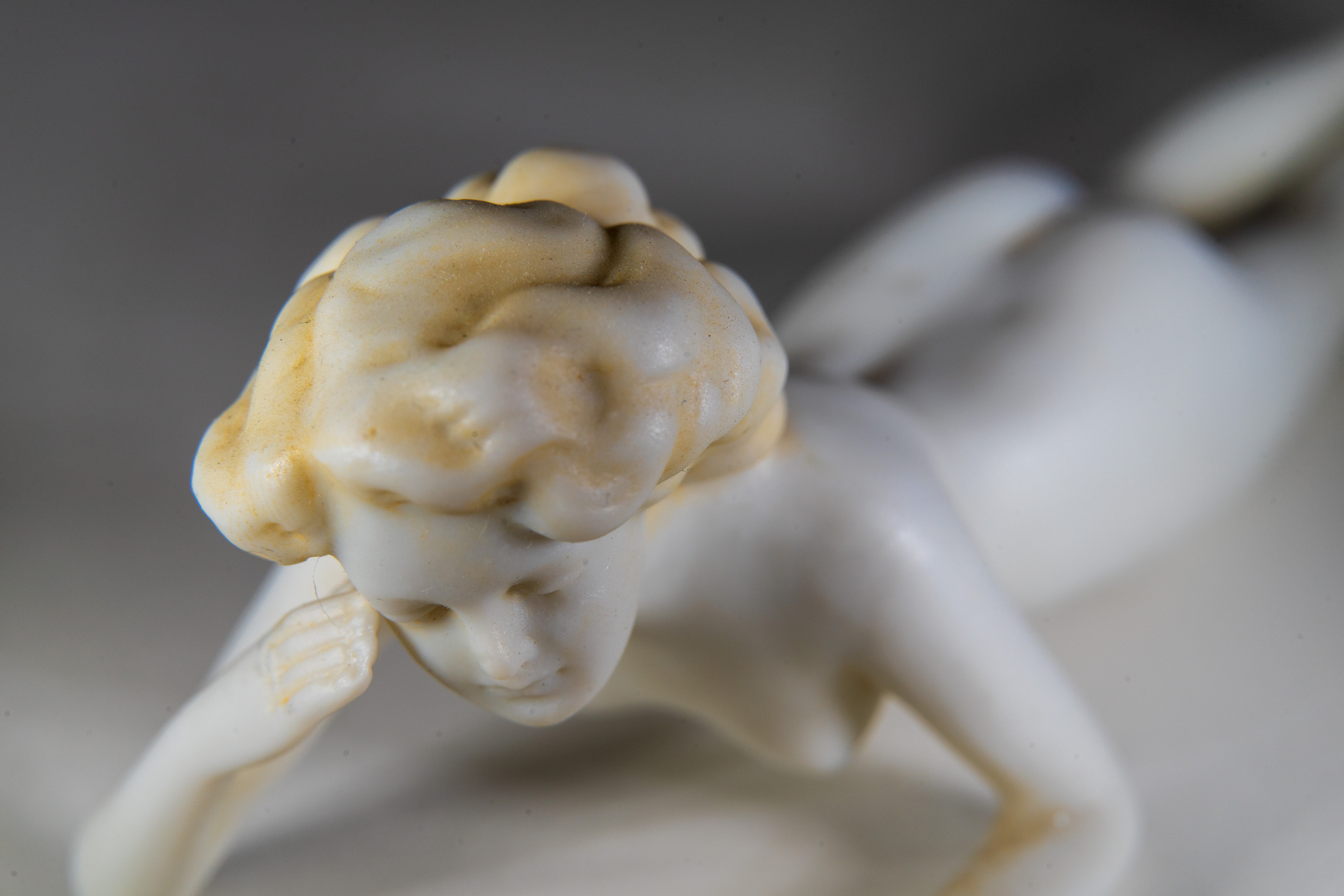
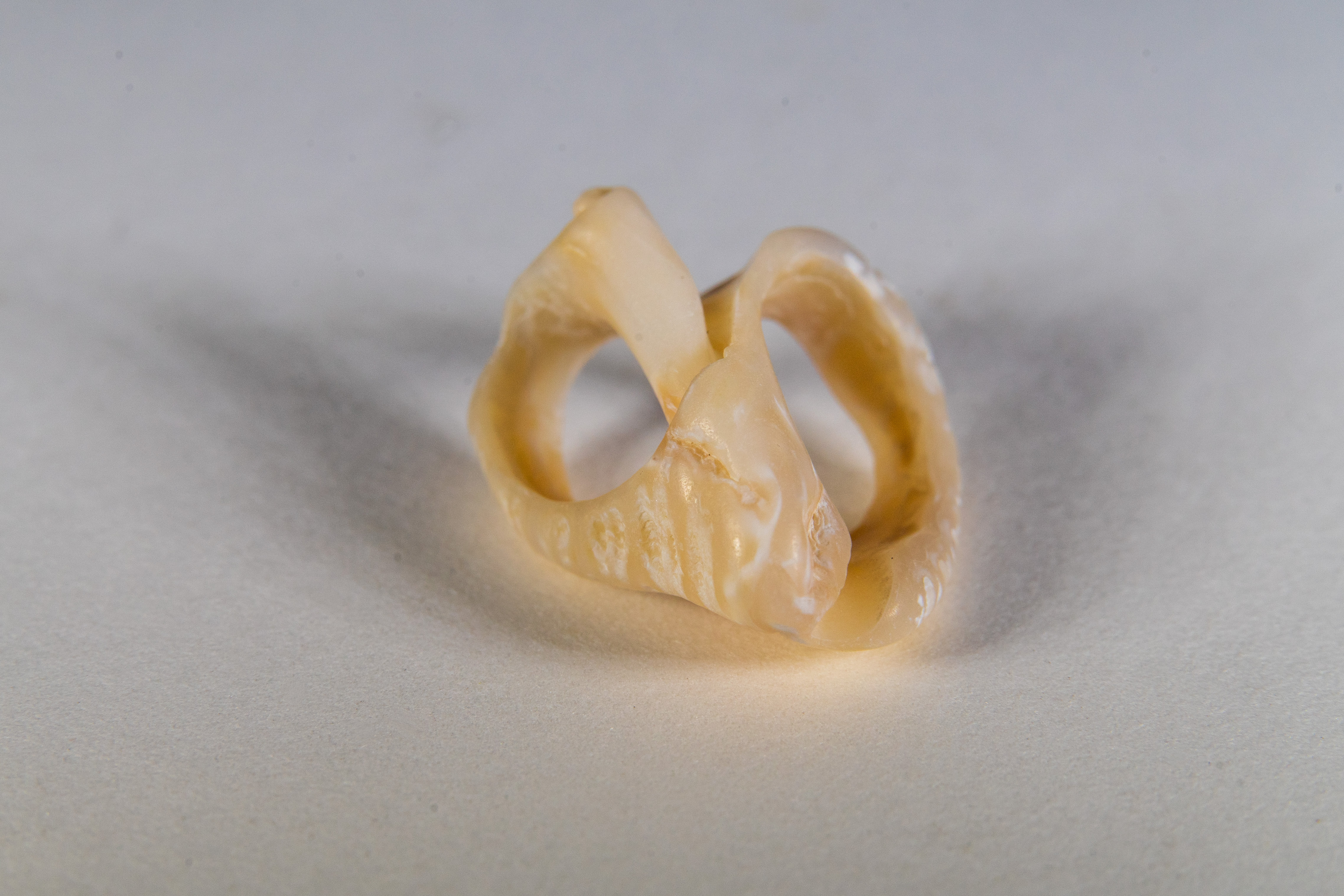
Meike MK Extension Tube Set: Verdict
Some say that two’s company, three’s a crowd. Compared to various extension tube sets that comprise three separate tubes, I find the two-tube Meike kit easier and more convenient to use. Better still, when using either or both of the tubes in this kit, I found that shooting with my Sony camera and Viltrox lens was relatively simple and straightforward, with the minimum of effort and a hugely greater hit rate than I usually get when using extension tubes. Everything simply works, and it works really well. The tubes are still less effective and convenient than using a ‘proper’ macro lens, but they’re the next best thing and sell for an incredibly affordable price, making them a real bargain buy.
Features ★★★★☆ | There are ‘only’ two extension tubes in this kit rather than the three that are sometimes featured, but they have full electronic connectivity. |
Design ★★★★☆ | Typical of extension tubes, they don’t have weather-seals but they do have robust metal mounting plates and good overall build quality. |
Performance ★★★★☆ | The Meike kit is impressively quick, easy and effective to use compared with many extension tube sets. |
Value ★★★★★ | Considering the build quality, electronic compatibility and performance, this kit is excellent value for money. |
Alternatives
The Viltrox DG AF Macro Extension Tube Ring is also designed for mirrorless cameras but more limited compatibility, available only in Nikon Z and L-mount options, the latter suiting Leica, Panasonic and Sigma cameras. The Viltrox again features two extension tubes, this time of 12mm and 24mm in length, giving a combined maximum of 36mm, complete with electronic pass-through from camera body to lens.
The Fotodiox Macro Extension Tube Set is available in a wide range of Canon EF, Fujifilm X, MFT, Nikon F, Sony A and Sony E mount options. It has three tubes with lengths of 7mm, 14mm and 28mm but no electronics connections. As such, it can only be used in fully manual mode, with lenses that feature mechanical control rings for aperture and focusing.
Deals
Matthew Richards is a photographer and journalist who has spent years using and reviewing all manner of photo gear. He is Digital Camera World's principal lens reviewer – and has tested more primes and zooms than most people have had hot dinners!
His expertise with equipment doesn’t end there, though. He is also an encyclopedia when it comes to all manner of cameras, camera holsters and bags, flashguns, tripods and heads, printers, papers and inks, and just about anything imaging-related.
In an earlier life he was a broadcast engineer at the BBC, as well as a former editor of PC Guide.
You must confirm your public display name before commenting
Please logout and then login again, you will then be prompted to enter your display name.
